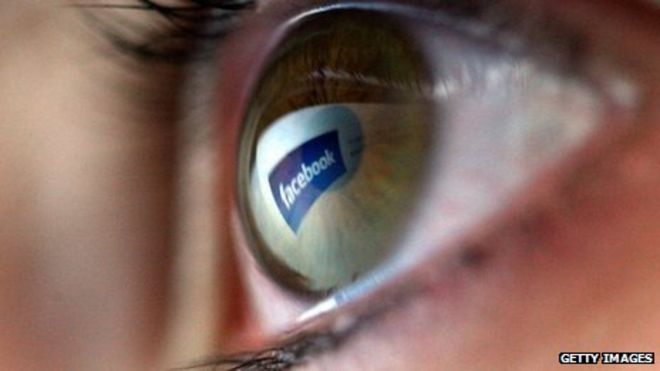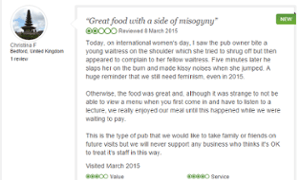1) Introduction:
The first industry that I have been investigating is news. Traditional print news has faced a decline in recent years, while new and digital media has allowed news cooperation's to remain successful through news online and paywalls. In addition, I have been researching political activism and focusing on 'The Everyday Sexism Project', founded by Laura Bates.
Technological convergence has allowed audiences to access the internet and several applications through one device. This includes smartphones, tablets and computers. Media institutions are using new and digital media to reach audiences as it has become easier to reach them due to technological convergence. It has increased convenience for audiences, as well as success and profits for institutions.
2) Social Media-Snapchat:
Social media sites allow audiences to access news as well as being able to view, comment, like pictures and interact with others through messages. Snapchat in particular has recently introduced a new page to the application where audiences are able to view the latest news of different companies. These include: Sky News, Yahoo News and Mail Online. The reason these News institutions use Snapchat as a platform to share their news on is because they are aware of the popularity of the social app and therefore helps them gain an audience. Moreover, Snapchat allow these companies to share their news with their users because it increases their profits.
3) Social Media-Twitter:
Other social media sites such as Twitter also work together with news institutions in order for both parties to gain publicity. For example, a recent 'News on the Tweet' article stated that Twitter and news companies must trust one another as news uses Twitters platform to reach audiences. Twitter is therefore good for news companies as they gain a larger audiences, as well as being beneficial for Twitter as people use the social site to read news.
4) Marxism and Pluralism
A Marxist view would argue that institutions are in power, have the control and it is all an illusion for Pluralists. Whereas, Pluralists would say that in fact audiences are even more empowered now as they can choose how to view media e.g. news, music, videos, programmes etc. For example, audiences can choose whether they want to support artists by watching their videos on YouTube, helping them gain views and contribute to their success by purchasing their music on iTunes.
5) Paywalls/Globalisation
Most online news companies such as The Times use paywalls in order to gain revenue, through audiences paying a subscription fee to access their content and news. It has proven successful with some institutions as audiences have been willing to pay for their news, however others have seen a fall in profits. The Guardian make revenue through advertising and sponsorship and have expanded into Australia and America. This can be linked to Globalisation. It has also meant that local areas are becoming the same as everywhere else and moreover, the local economy dies down. This is because audiences are able to access international news on a larger scale, therefore do not bother to purchase local newspapers.
6) Flip the question. It has also enabled audiences to reach institutions..
Feminist movements such as 'The Everyday Sexism Project' has allowed audiences to communicate via website and social media and protest together. It has also allowed them to share their issues and problems and gain advice from one another, using Twitter and Facebook as well as the Everyday Sexism website created by Laura Bates. Furthermore, citizen journalism has evolved and allowed audiences to challenge content created by news institutions. For example, a couple of weeks ago a boy was shot in South Carolina. Walter Scott had been murdered by a white police officer who killed the boy, then handcuffed him whilst he was dead and dropped a taser next to him. However, a man had videoed the event, therefore citizen journalism proved the police officer guilty so he was punished for murder. This may not have been possible without the footage as elite people such as the police officer would have made out that Walter did something wrong, therefore justifying his death.
7) Conclusion
Overall, I believe that new and digital media is used by institutions to reach audiences on a wider scale and gain a larger audience share. However, it also gives audiences a way to reach institutions e.g. through Twitter. This therefore allows audiences to challenge dominant forces and elite people/institutions as the Walter Scott shooting has shown, as well as cases in the past like the shooting of Ian Tomlinson.
4) Marxism and Pluralism
A Marxist view would argue that institutions are in power, have the control and it is all an illusion for Pluralists. Whereas, Pluralists would say that in fact audiences are even more empowered now as they can choose how to view media e.g. news, music, videos, programmes etc. For example, audiences can choose whether they want to support artists by watching their videos on YouTube, helping them gain views and contribute to their success by purchasing their music on iTunes.
5) Paywalls/Globalisation
Most online news companies such as The Times use paywalls in order to gain revenue, through audiences paying a subscription fee to access their content and news. It has proven successful with some institutions as audiences have been willing to pay for their news, however others have seen a fall in profits. The Guardian make revenue through advertising and sponsorship and have expanded into Australia and America. This can be linked to Globalisation. It has also meant that local areas are becoming the same as everywhere else and moreover, the local economy dies down. This is because audiences are able to access international news on a larger scale, therefore do not bother to purchase local newspapers.
6) Flip the question. It has also enabled audiences to reach institutions..
Feminist movements such as 'The Everyday Sexism Project' has allowed audiences to communicate via website and social media and protest together. It has also allowed them to share their issues and problems and gain advice from one another, using Twitter and Facebook as well as the Everyday Sexism website created by Laura Bates. Furthermore, citizen journalism has evolved and allowed audiences to challenge content created by news institutions. For example, a couple of weeks ago a boy was shot in South Carolina. Walter Scott had been murdered by a white police officer who killed the boy, then handcuffed him whilst he was dead and dropped a taser next to him. However, a man had videoed the event, therefore citizen journalism proved the police officer guilty so he was punished for murder. This may not have been possible without the footage as elite people such as the police officer would have made out that Walter did something wrong, therefore justifying his death.
7) Conclusion
Overall, I believe that new and digital media is used by institutions to reach audiences on a wider scale and gain a larger audience share. However, it also gives audiences a way to reach institutions e.g. through Twitter. This therefore allows audiences to challenge dominant forces and elite people/institutions as the Walter Scott shooting has shown, as well as cases in the past like the shooting of Ian Tomlinson.







